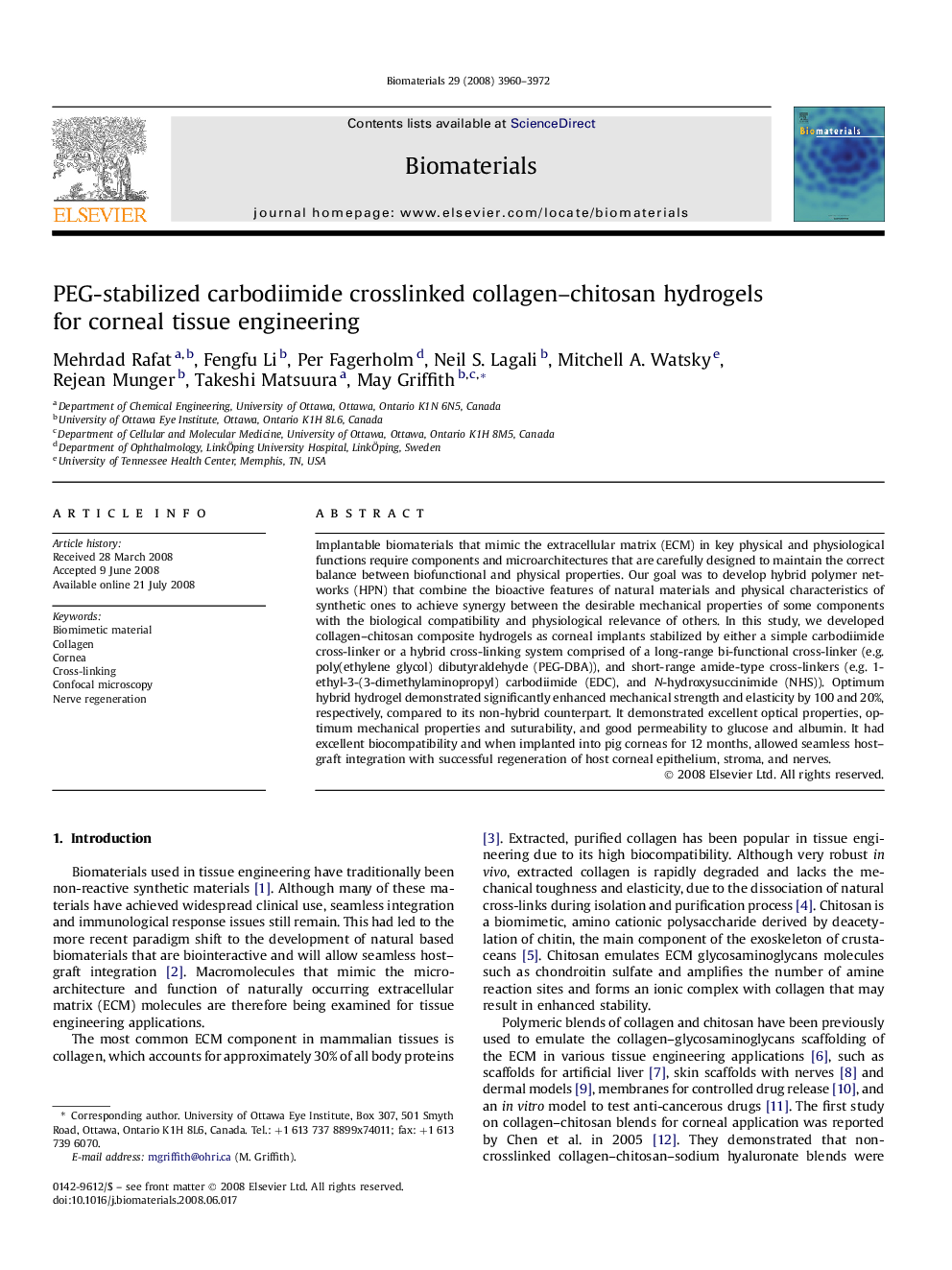| Article ID | Journal | Published Year | Pages | File Type |
|---|---|---|---|---|
| 9218 | Biomaterials | 2008 | 13 Pages |
Implantable biomaterials that mimic the extracellular matrix (ECM) in key physical and physiological functions require components and microarchitectures that are carefully designed to maintain the correct balance between biofunctional and physical properties. Our goal was to develop hybrid polymer networks (HPN) that combine the bioactive features of natural materials and physical characteristics of synthetic ones to achieve synergy between the desirable mechanical properties of some components with the biological compatibility and physiological relevance of others. In this study, we developed collagen–chitosan composite hydrogels as corneal implants stabilized by either a simple carbodiimide cross-linker or a hybrid cross-linking system comprised of a long-range bi-functional cross-linker (e.g. poly(ethylene glycol) dibutyraldehyde (PEG-DBA)), and short-range amide-type cross-linkers (e.g. 1-ethyl-3-(3-dimethylaminopropyl) carbodiimide (EDC), and N-hydroxysuccinimide (NHS)). Optimum hybrid hydrogel demonstrated significantly enhanced mechanical strength and elasticity by 100 and 20%, respectively, compared to its non-hybrid counterpart. It demonstrated excellent optical properties, optimum mechanical properties and suturability, and good permeability to glucose and albumin. It had excellent biocompatibility and when implanted into pig corneas for 12 months, allowed seamless host–graft integration with successful regeneration of host corneal epithelium, stroma, and nerves.
